Last Updated on: February 5, 2025
With its amusement parks, orange orchards, and beach resorts, Florida is popular for many things. The year-round sunny climate is not to be missed as well.
But that’s not all…
The Sunshine State also has a reputation for being a birder’s paradise. It has diverse and productive ecosystems that make it home to hundreds of bird species, including those that can come to your backyards.
Curious about Florida backyard birds? Read on as we list down some species you will find in the state.
Identification Of 30 Florida Backyard Birds
1. Red-Winged Blackbird

One of the most familiar birds in the state, the red-winged blackbird has a glossy-black body. Males are unmistakable because of the red and yellow badges on their shoulders. Females, on the other hand, have brownish bodies with crisp streaks.
If you want to see red-winged blackbirds in Florida, head to freshwater and saltwater marshes. Alternatively, you can spot them on wet roadsides and golf course hazards. In the winter, crop fields are among their favorite habitats.
The red-winged blackbird will eat small insects, worms, seeds, and nuts. You can attract them in backyard bird feeders with suet.
While red-winged blackbirds are small, they are fearless. They are known for being fierce defenders of their territories, chasing even larger birds like hawks.
2. Florida Scrub Jay
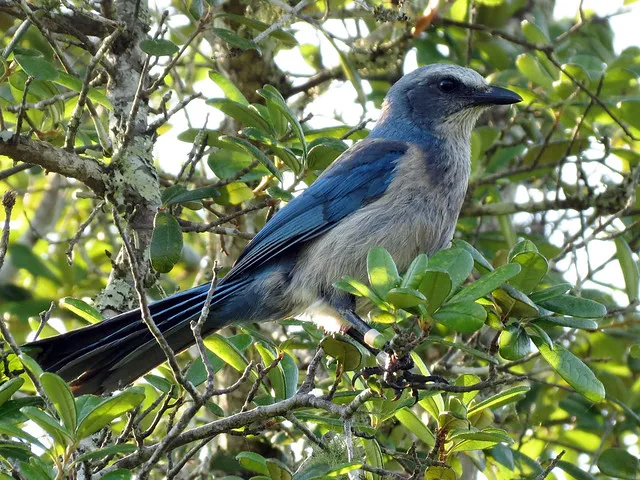
This bird is not as prominent as the others on this list. Nonetheless, it can be found only in Florida, so it is worthy of inclusion in our rundown of the most common backyard birds in the state.
Looking at its appearance, the Florida scrub jay has a blue body with a pale gray belly and back and whitish forehead. More so, it has a long tail, heavy bill, and big flat head.
In the wild, the most common habitats of the Florida scrub jay include scrubby flatwoods. They are also often seen in open areas with sandy patches.
These birds will visit bird feeders with various types of nuts and seeds. They also eat insects, snails, and spiders.
3. Northern Cardinal
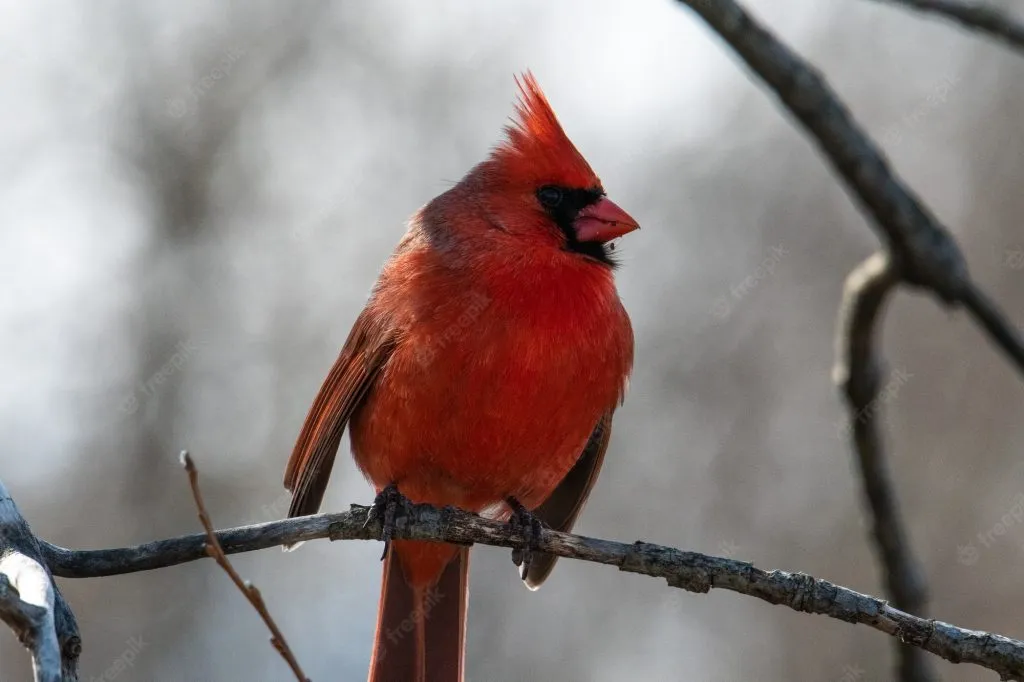
It is almost impossible to have a list of common birds in the Sunshine State without mentioning northern cardinals.
Males are easily recognizable because of their color. They have a brilliant red plumage, as well as a black face and reddish bill. Meanwhile, females are almost pale brown throughout their bodies with hints of red in the crest, tail, and wings.
The songs of these birds are familiar in many backyards in Florida. They do not migrate, and hence, you will find them in the state throughout the year.
4. Eastern Bluebird

One of the favorites of bird watchers in Florida, the eastern bluebird has large eyes, a rounded head, a straight bill, and short legs. They are a visual treat because of the vivid blue bodies of males with a brick-red tinge on the breast and throat. Meanwhile, females are grayish in the upper body with bluish tails and wings and light orange breasts.
The easiest way to attract eastern bluebirds to the backyard is to have a bird feeder with mealworms. A bird box with insects will also lure them into your property.
You will see eastern bluebirds throughout the year in Florida. However, they are less common in southern Florida than in the other parts of the state.
5. Blue Jay
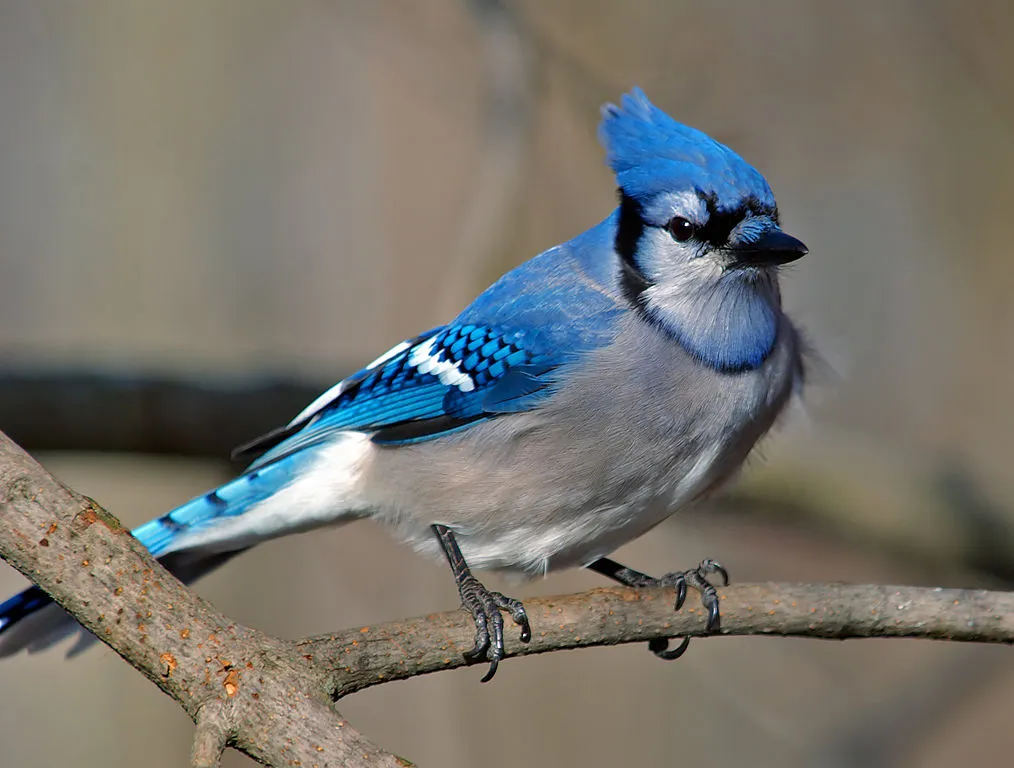
One of the common backyard birds in the Sunshine State, the blue jay has an attractive plumage that makes it head-turning. It has bright blue feathers that cover most of its back, while the belly is white. The wings have black and blue stripes.
The blue jay also has a reputation for being a smart bird. It is capable of cracking nuts. Aside from nuts, it will also eat insects, such as grasshoppers, beetles, and caterpillars.
While they are beautiful, the presence of blue jays in the backyard can be annoying because they are noisy. Their loud calls imitate the calls of other birds, including hawks.
6. Red-Bellied Woodpecker
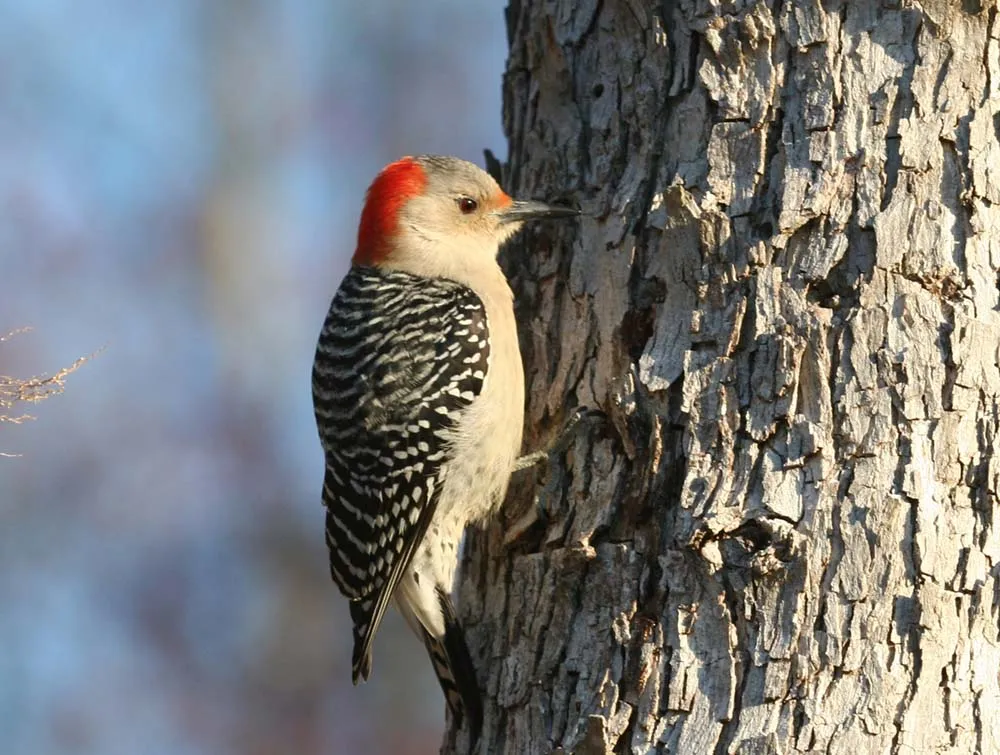
Even if its name says that it is red-bellied, the color of the belly is too pale to be noticeable. Instead, the first thing that you will see in the red-bellied woodpecker is the red streak at the back of its head. This is also why a lot of people confuse it with a red-headed woodpecker.
Red-bellied woodpeckers stay in Florida throughout the year. They are most abundant in woodlands, especially when there is pine, hickory, and oak.
These Florida backyard birds love hummingbird feeders. They use their long tongues for drinking nectar. Alternatively, they will also come to suet feeders.
7. Painted Bunting

Are you planning a bird-watching trip to Florida? If yes, then the painted bunting should be on your itinerary. They also visit backyards, although they are not as common as the other birds on this list.
This medium-sized bird is guaranteed to be a head-turner. Its plumage is a combination of blue, green, and yellow, making it one of the most picturesque birds you will find in the state.
During the breeding season, they feed on insects. You can also attract them by having bird seeds in ground feeders. Nonetheless, they are elusive.
The population of the painted bunting is rapidly declining. Nonetheless, Florida is the only state in North America with the breeding and wintering population of this bird.
8. Northern Mockingbird
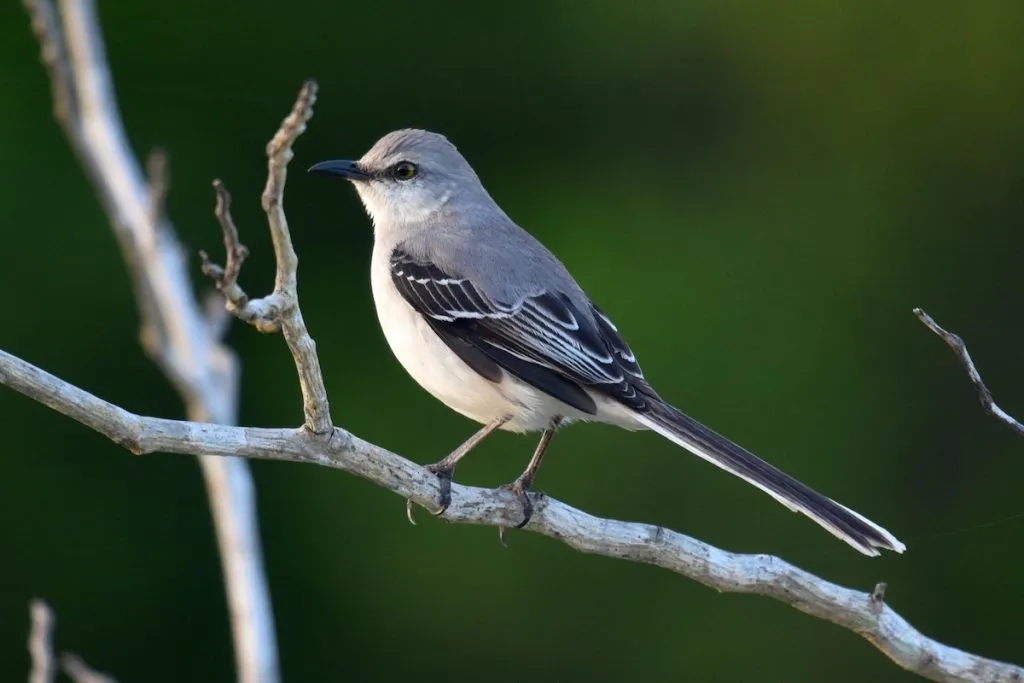
A permanent resident in Florida, the northern mockingbird has a long tail and medium head. Since 1927, it has been designated the state bird of Florida.
In terms of color, it is not very commanding. It is mostly gray throughout the body, which makes it quite a challenge to identify. One of the things you should look at is the long tail feathers.
While they are not visually stunning, northern mockingbirds are identifiable because of their sounds. They have loud songs with varied repetitions. They are noisy, especially during the breeding season.
9. House Sparrow
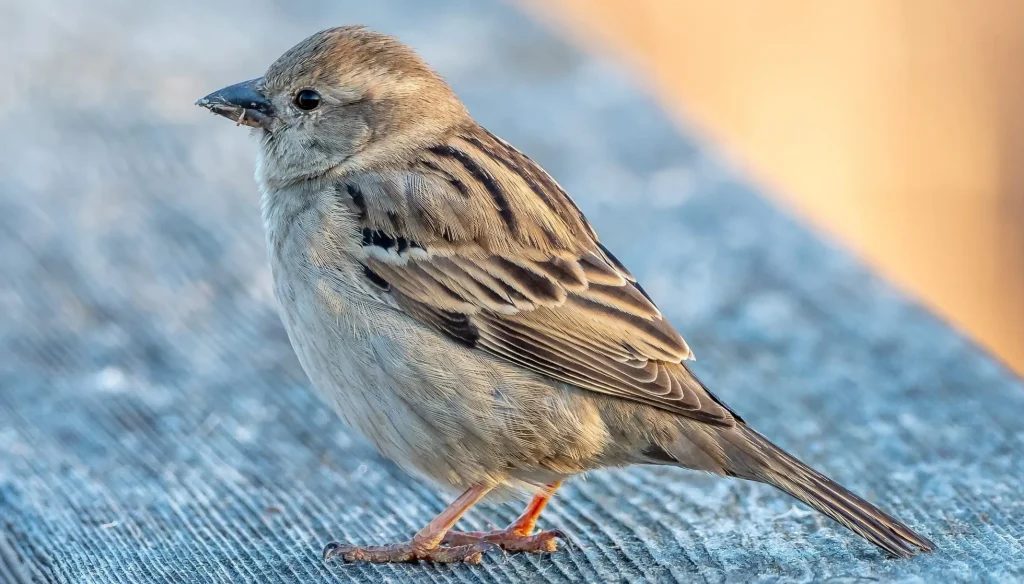
The house sparrow is a non-native bird in North America. They were first introduced in New York in the 1800s. Since then, they spread like wildfire and are now among the most frequent backyard birds in Florida.
House sparrows are mostly dark brown throughout their bodies. They also have a thick and fat belly despite being small overall.
They are invasive species and considered pests, so they are not a welcome sight in many Florida backyards. Their aggressive behaviors can threaten smaller bird species.
10. Boat-Tailed Grackle
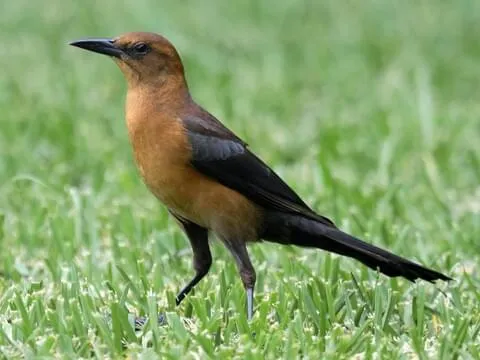
It may not be as popular as the other bird species on this list, but the boat-tailed grackle is another backyard bird that you can find in Florida.
They are skinny but tall, with blue and black color combinations on their bodies. One of their distinct characteristics is their V-shaped tail, which is also what differentiates them from other grackles.
There can be slight variations depending on which part of the state they are seen. In central and southern Florida, their eyes are dark. Meanwhile, in the northern part of the state, their eyes are lighter.
If you want the boat-tailed grackle to come to your backyard, install bird feeders and put black oil sunflower seeds, millet, corn, and sorghum.
11. Ruby-Throated Hummingbird
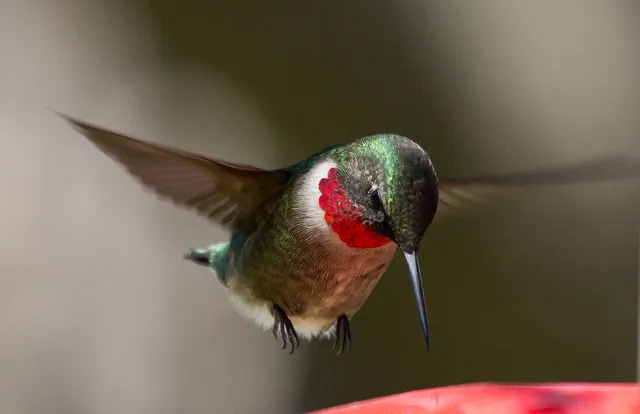
The most common hummingbird you will find in North America, the ruby-throated hummingbird is in Florida from April to May, which is also the breeding season.
When you see a ruby-throated hummingbird, one of the things that will catch your attention is the ruby-colored throat, which is where it got its name. This is found only in males. The backs, heads, and wings are emerald green, and the under-parts are white.
Attract ruby-throated hummingbirds to your backyard by installing nectar feeders. Planting tubular flowers will also work.
12. Mourning Dove
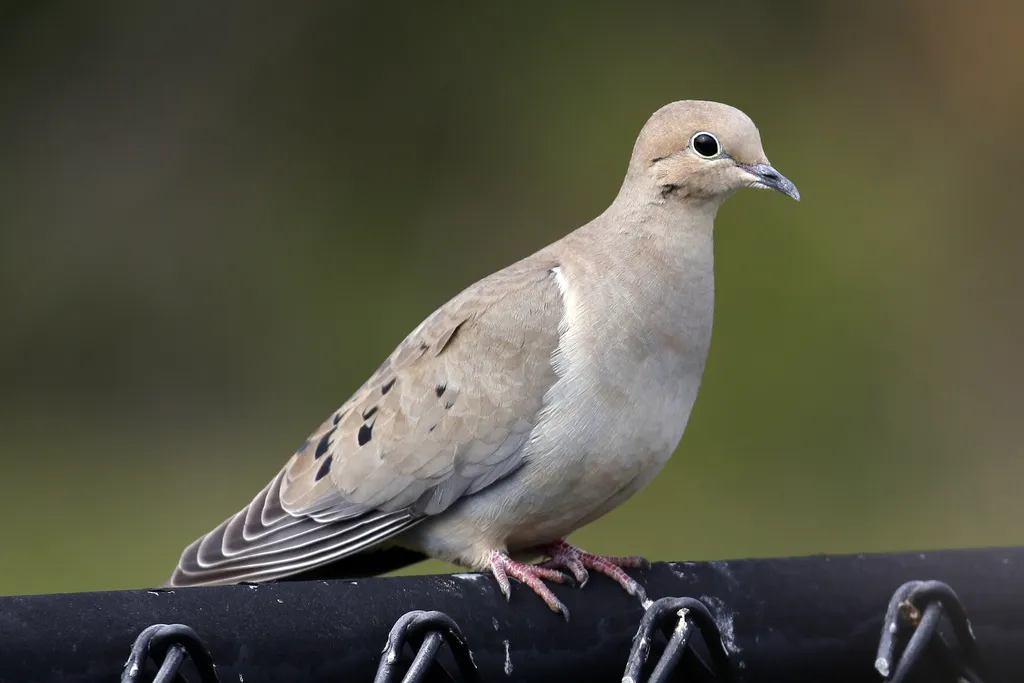
With brown and gray bodies, mourning doves are not as striking as their more colorful counterparts. They are buffy tan to brown, and their wings have black borders.
It is easy to detect their presence not because of their appearance but because of their sad cooing. Their songs are reminiscent of mourning, which some people might find creepy.
Open platform feeders and ground feeders will work best if you want mourning doves to come to your backyard in Florida. They will eat black oil sunflower seeds, shelled peanuts, and cracked corn.
The mourning dove has an enlarged esophagus known as a crop. This is where they collect seeds to eat.
13. Tufted Titmouse
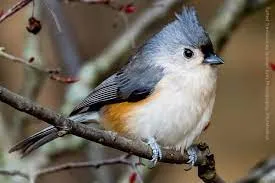
These common birds in Florida backyards are year-round residents. Nonetheless, its sightings are rare in the southern tip of the state, including Miami.
Some of the most common physical features of these small birds include a thick neck, large eyes, stout bill, and pointed crest. Additionally, it has a soft silvery gray upper body and white under-body. There is also a black patch above its nose.
Tufted titmice are fun to watch because of their acrobatic foraging habits. They will hop on branches and twigs while searching for something to eat.
They will eat seeds and insects. In the summer, caterpillars are their favorites. In the winter, seeds, berries, and small fruits are preferred.
14. American Crow
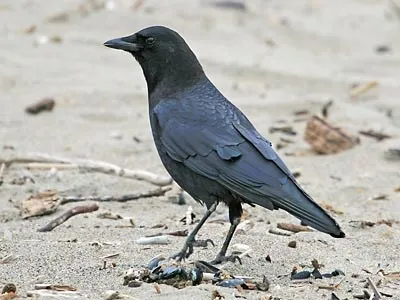
A large bird with an average length of 15.8 to 20.9 inches, the American crow has a thick neck, long legs, short tail, and straight bill. It is all black, including its bill and legs. However, when it molts, the body turns from glossy to scaly or brownish.
American crows are social birds. They form large flocks, which can reach thousands of birds in massive groups. These birds are also known for being problem solvers and learners.
Aside from backyards, other places where you will find American crows are in forests and open fields. They also thrive in garbage dumps and roadsides.
15. Carolina Wren
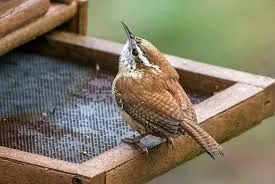
If you see a wren in your Florida backyard in the summer, chances are, it is a Carolina wren. They are the only year-round wrens in the state.
Small and chunky, the Carolina wren has a little neck, small tail, slender bill, and round body. As for the color, they are bright reddish-brown on the top and buffy orange under the body.
You can lure them into your yard by having suet feeders. They will also eat hulled sunflower seeds and peanut hearts.
Aside from backyards, other places where you can see Carolina wrens in Florida are in areas with dense vegetation, including forest ravines.
16. Eastern Phoebe
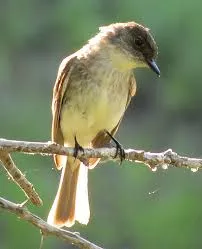
With the plain appearance of the eastern phoebe, this is not one bird that commands attention. Despite such, it is a favorite amongst bird watchers.
The eastern phoebe is brownish gray in the upper body and off-white underneath. The head is usually the darkest among its upper parts. In the fall, the fresh plumage of this bird can show hints of yellow on its belly.
These birds are very active. When they are not perching on fence lines and trees, they are on short flights looking for insects to eat.
17. Common Grackle

A large blackbird with a long tail and neck, the common grackle looks all black when you see it from a distance. When you look closer, however, you will notice that it has an iridescent body and a purple head.
It is common to see these birds in large flocks, especially when they are foraging. They are frequent visitors to bird feeders, but a lot of people do not like them in the backyard because they are aggressive. They will scare other birds, especially those who are smaller than them.
When they are not in the backyard, common grackles prefer open habitats, including marshes, meadows, forest edges, and woodlands.
18. Yellow-Rumped Warbler
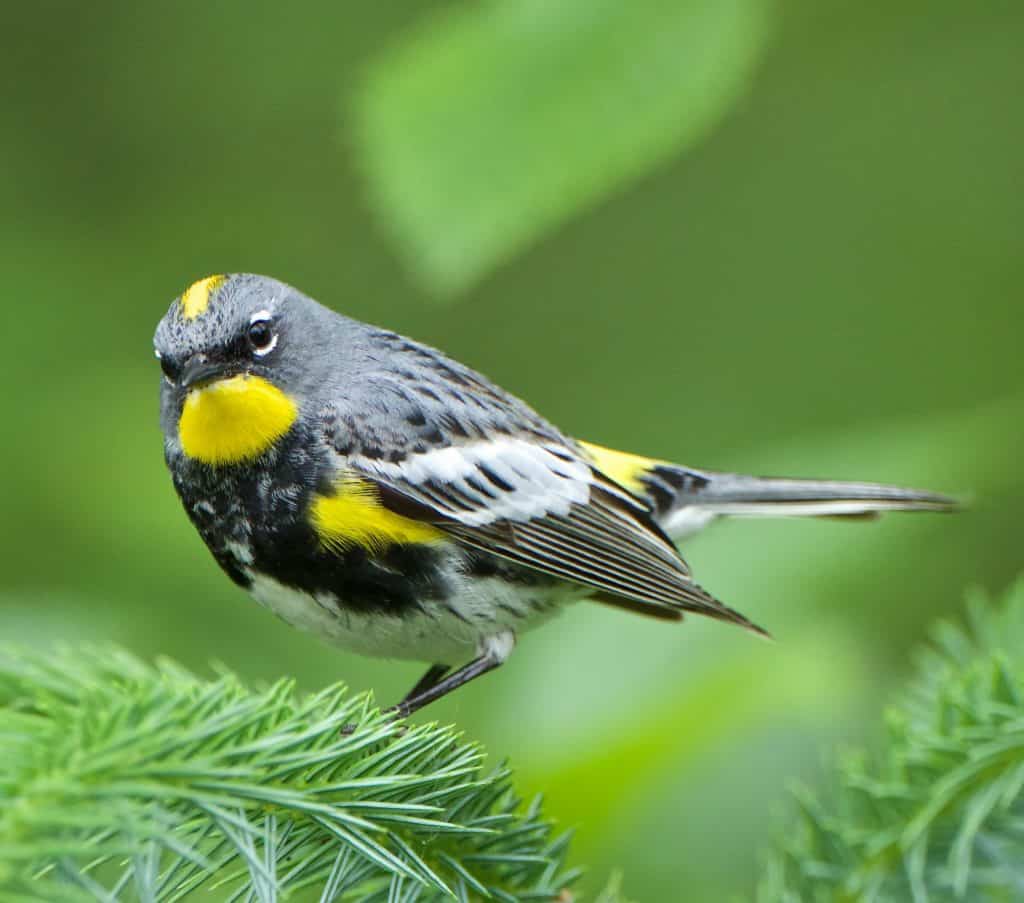
One of the most common winter birds in the Sunshine State, the yellow-rumped warbler can be often seen in open areas looking for shrubs with fruits to eat.
With a length of 4.7 to 5.5 inches and a wingspan of 7.5 to 9.1 inches, yellow-rumped warblers are about the same size as black-capped chickadees.
When foraging, yellow-rumped warblers spend most of their time outside tree canopies. With this, they like staying in deciduous forests, but they can also show up in the backyard.
19. Blue-Gray Gnatcatcher
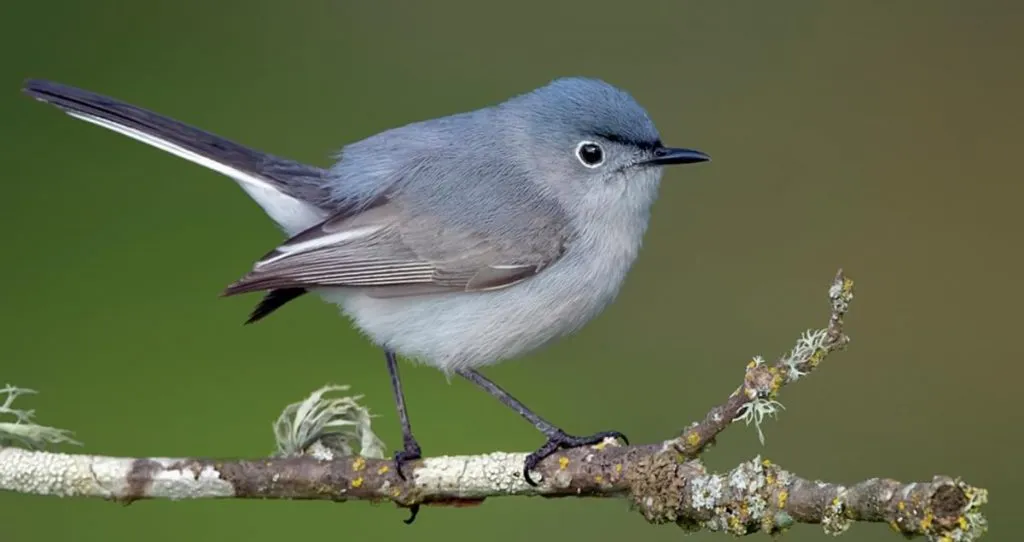
As the name implies, this backyard bird in Florida is mostly blue-gray throughout its body. It has a thin but noticeable eye ring. The bird also has a straight bill and long legs.
The blue-gray gnatcatcher is an energetic bird. It is often flitting as it hunts for its prey. The diet consists of mostly insects, including caterpillars, leaf beetles, plant bugs, and leafhoppers. It also eats spiders.
The best way to attract them to your backyard is to have bird-friendly landscaping. It helps to have deciduous trees that will provide habitats for these birds.
20. Gray Catbird

Native to North and Central America, the gray catbird has a round tail, narrow bill, and long legs. It is slaty gray throughout the body with a rufous-brown patch on the tail and a tiny brown patch on the head.
Male birds from this family are known for being melodious. They use their calls to attract mates during the breeding season.
In Florida, gray catbirds are more frequent in the summer. They will visit backyards with berries and fruits, as well as insects and small worms.
21. Downy Woodpecker

The smallest woodpecker that you will find in North America and Florida, the downy woodpecker has a length of 5.5 to 6.7 inches. Meanwhile, its wings span 9.8 to 11.8 inches.
Downy woodpeckers stay in the Sunshine State throughout the year. Aside from backyards, their natural habitats include forests, orchards, and river groves.
They are easy to attract in bird feeders. They like suet, black oil sunflower seeds, and mixed seeds. Small insects also form a major part of their diet, as well as worms.
22. Common Yellowthroat
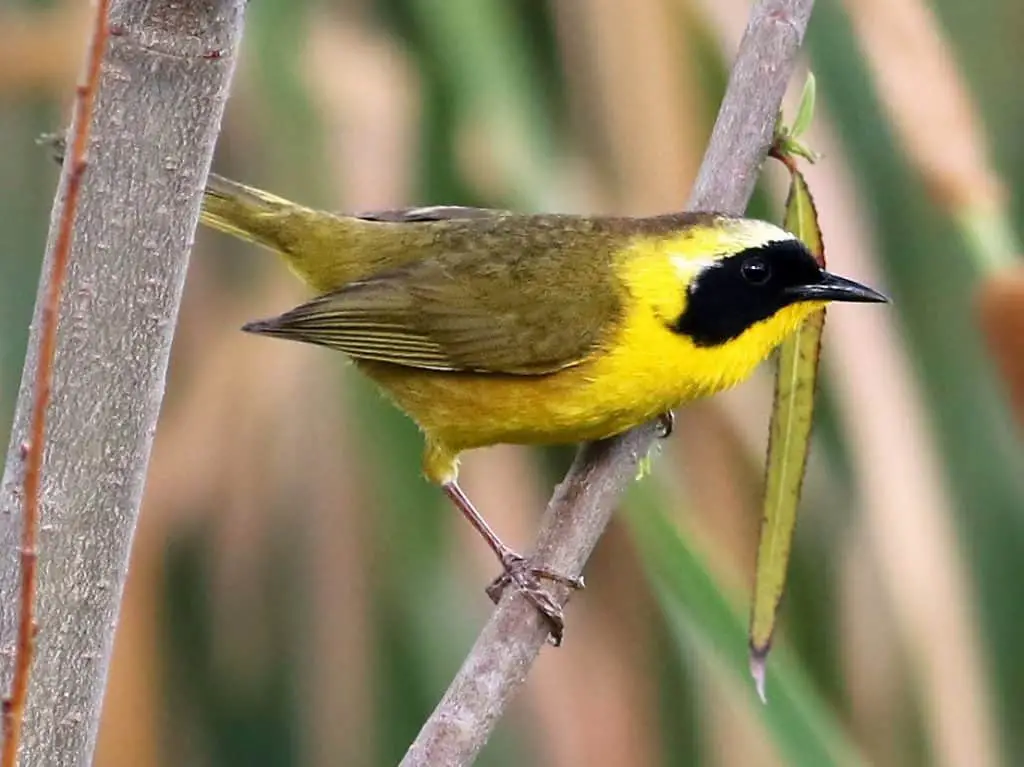
A chunky songbird, the first thing that you will notice in common yellowthroat is the bright yellow color of the throat. Males have olive upperparts and a black mask. Meanwhile, females are olive-brown.
Most of the time, common yellowthroats are skulking on the ground. They are searching for small insects to eat.
You will see the common yellowthroat in areas with thick and low vegetation, including grasslands and marshes. They can also come to backyards, especially when there are dried insects.
Common yellowthroats are known for being secretive about their nests. They will stop flying when they are near their nesting sites and walk towards them.
23. Palm Warbler
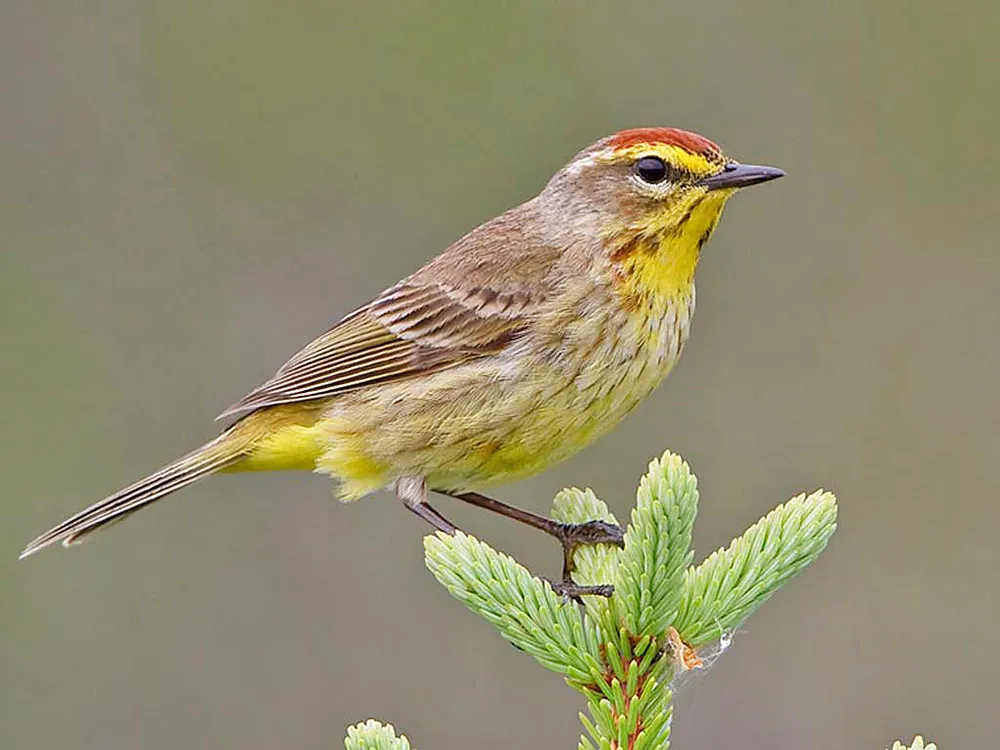
In the winter, palm warblers are common sights in the southeastern United States, including Florida. They live near palm groves, but you will not see them on the top of palms.
Compared to other warblers, the posture of the palm warbler is more upright. Its upper body is dull olive-brown with a hint of yellow in the throat and tail. Both sexes have a similar physical appearance. A rusty cap is visible during the breeding season.
To confirm the identity of this bird, watch out for its behavior. It is constantly wagging its tail when it is walking on the ground as it looks for food.
24. Northern Parula
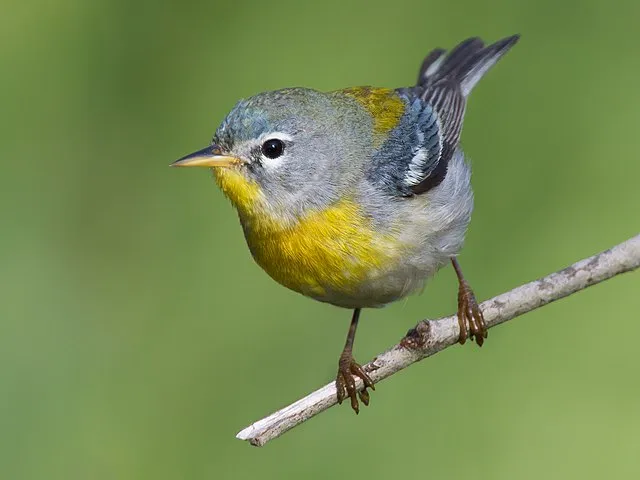
Only a few warblers are in Florida year-round, and one of them is the northern parula. Although, their locations in the state can vary depending on the season.
The northern parula has a plump body, short tail, and pointed bill. Adult males are bluish gray with two white wing bars and a yellow-green patch at the back. On the other hand, female birds are duller and do not have a breast band, which you will see in males.
Deciduous forests are the preferred habitats of northern parulas. You can also find them in evergreen forests. Nonetheless, you do not have to go far as they are also frequent visitors to Florida backyards.
25. European Starling
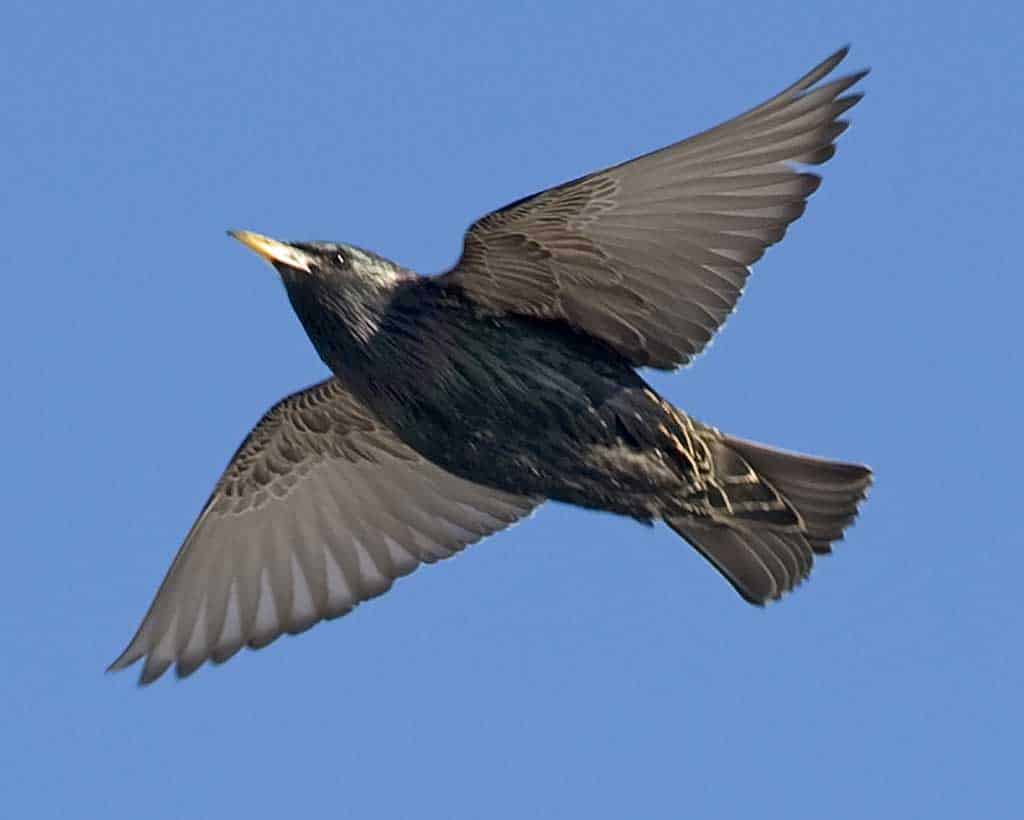
Unruly and invasive, European starlings are non-native birds in the Sunshine State. Many homeowners despise their sight in the backyards because they can scare more desirable birds.
Identifying a European starling is easy. It is stocky and short. One of the most prominent features is the yellow bill. Meanwhile, the feathers have iridescent shades of purple and green in the right lighting. In most cases, however, they look black, especially from afar.
If you do not want them to be in the backyard, you should remove their food and water sources. You can also prevent their presence by making nesting locations inaccessible.
26. American Robin
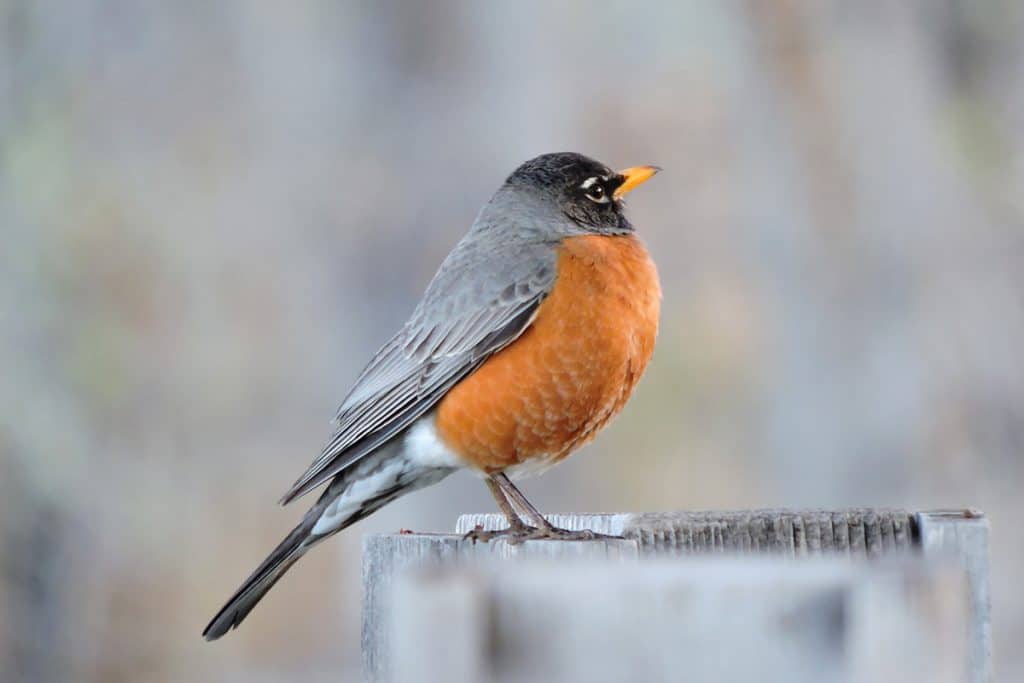
When you see an American robin in Florida, it is often the first sign of spring. They are migratory birds, so they do not stay throughout the year.
Most of the body of an American robin is gray-brown. The underparts are warm orange while the head is darker than the other parts of the body.
American robins are frequent sights in backyards, especially on the ground where they are tugging earthworms to eat.
Aside from backyards, you can also find American robins in deciduous forests, shrublands, pastures, and tundra.
27. Eastern Towhee
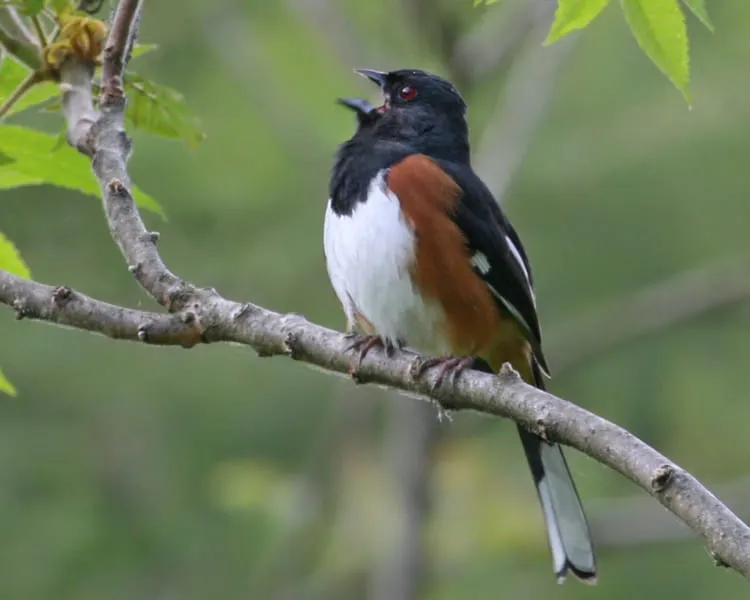
A year-round resident in mainland Florida, the eastern towhee thrives in oak barrens, open woods, and brushy areas. It requires a dense cover in its habitats, so you need trees and shrubs if you want them to be in your backyard.
Compared to other sparrows, the eastern towhee is a bit larger. It has a thick and triangular bill, which is thick enough to open seeds. Males are black on the top and breast while the belly is white and the sides are warm rufous. Females, meanwhile, are rich brown instead of black.
Most of the time, eastern towhees are on the ground. They use their feet to scratch leaves and hop backward.
28. Northern Flicker

A member of the woodpecker family, the northern flicker is a migratory bird, spending most of its time traveling. While they are often seen in backyards, they rarely visit bird feeders. If you want them to visit, install bird baths.
The northern flicker has black, white, and brown plumage. It also has prominent brown dots, which is one of the easiest ways to identify them. One difference between the sexes is that males have a red neck ring.
29. American Goldfinch
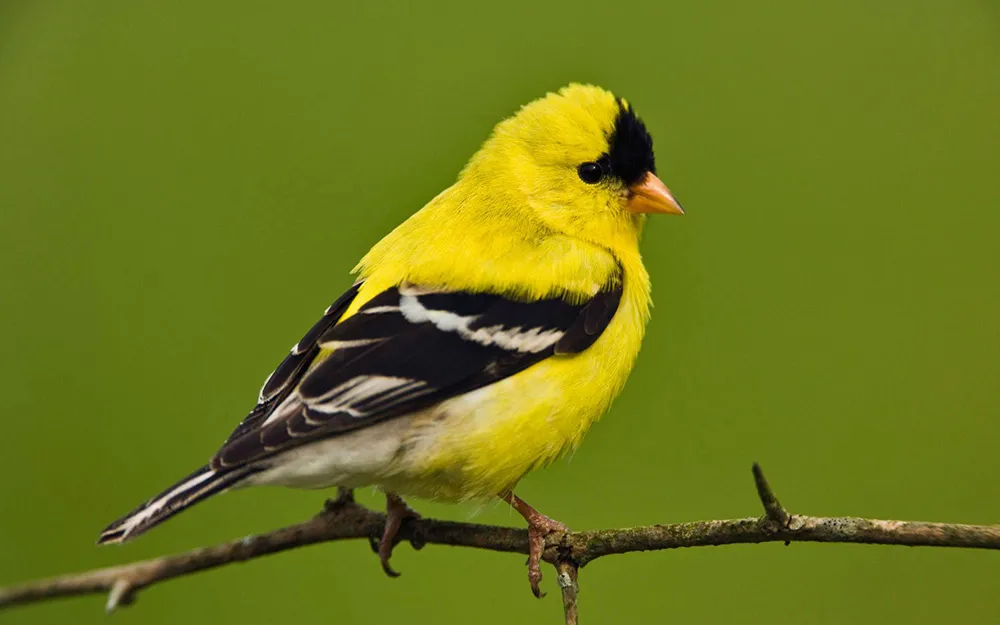
In the spring and summer, American goldfinches have bright yellow feathers, making them a beautiful sight in backyards and bird feeders.
Come winter, American goldfinches molt. They lose their bright-colored feathers. Their bodies transform into dull olive or brown.
Since they are non-breeding birds in the Sunshine State, the only time that you will find them in Florida is in the winter.
To attract American goldfinches in the backyard, you will need thistle feeders. They will also eat sunflower chips.
30. Baltimore Oriole
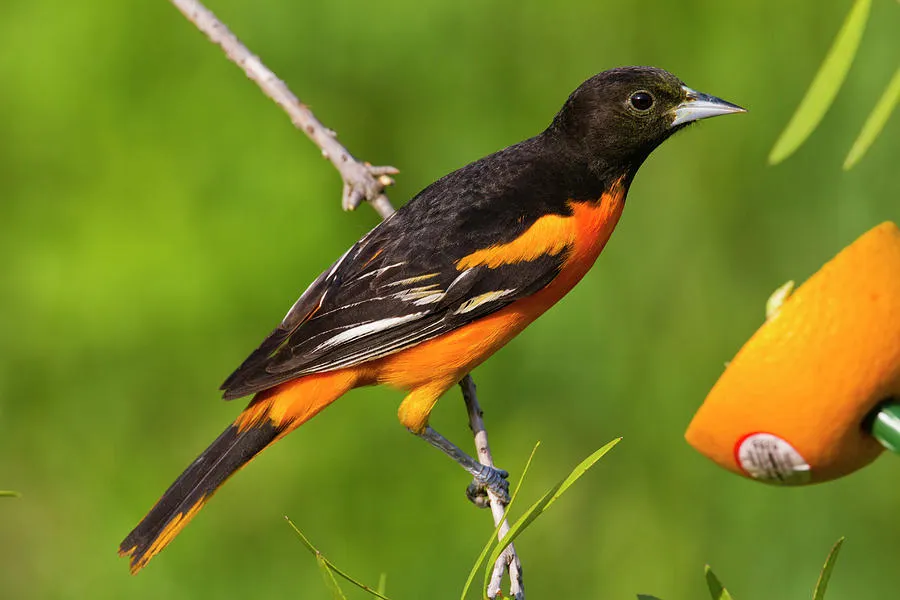
Wrapping up our list is a bird that you will find in Florida only in the winter. It is one of the most stunning birds on this list.
Their brilliant colors will turn heads. Males are a combination of flaming orange and black. The head is solid black, and the wings have a white bar.
Females, on the other hand, are yellow-orange on the breast. The back and head are grayish. Plus, they have two white bars on their black wings.
The natural habitats of Baltimore orioles are places with leafy deciduous trees. They are also present in orchards and backyards.
Baltimore orioles eat fruits. Their penchant for anything sweet is also the reason why farmers hate them. They are considered pests because they can wipe out crops.
Roaming Tip: What about taking a detour and flying over where Kool-Aid was introduced? Wing it over here — Birds In Nebraska.
Watch This!
Frequently Asked Questions
What is the most common bird in Florida?
The most common bird in Florida is the northern cardinal. They are present in the state throughout the year since they do not migrate. This small songbird has a beautiful plumage that makes it easily recognizable. Not to mention, they are also vocal birds, making them almost impossible to miss.
What is the state bird of Florida?
The state bird of Florida is the northern mockingbird. After more than a century, however, Florida wants to replace its state bird. Legislators are looking at other possibilities, including the flamingo, osprey, and roseate spoonbill.
What are the little brown birds in Florida?
You will find different types of tiny brown birds in the state. One of the most common is the chipping sparrow. Their numbers are highest in mid-October. These brown birds can also be Carolina wrens, which are year-round residents of the state.
Where can I go bird-watching in Florida?
Birds abound in the Sunshine State. You will find them beyond private backyards. Some of the best bird-watching spots in Florida are Merritt Island National Wildlife Refuge, Everglades National Park, Tomoka State Park, Blackwater River State Park, Dry Tortugas National Park, Lake Woodruff National Wildlife Refuge, and Blackwater River State Park.
Conclusion
Living in Florida is lovely! You will be within an arm’s reach of beautiful beaches, and you can enjoy plenty of sunshine. Even better, it is also home to many backyard birds, including those we have mentioned above.
Are there other backyard birds in Florida that you would like to add to the list? Let us know by leaving a comment below.

